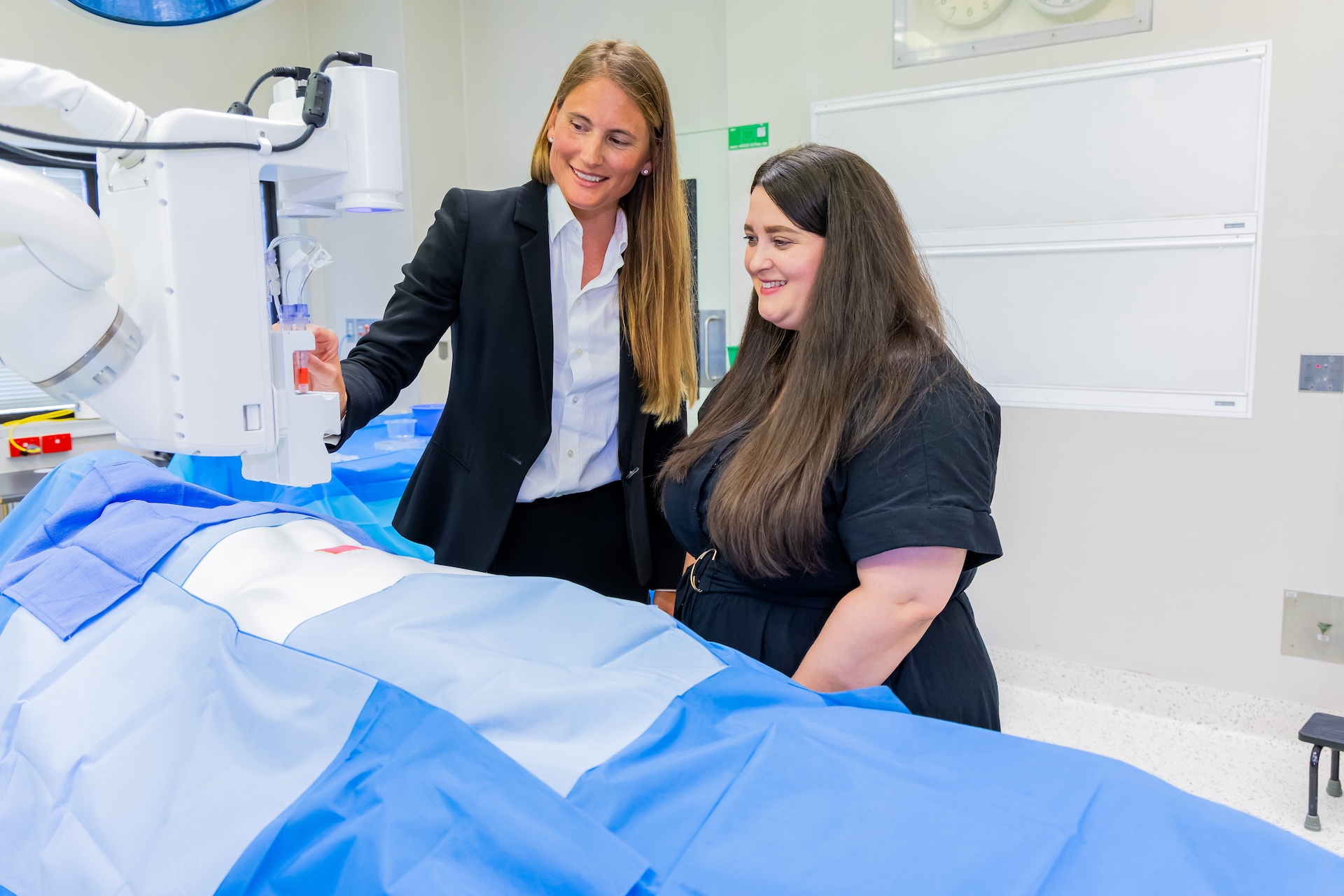
World first 3D printed skin trial under way at Concord Burns Unit
Health Minister visits to see new technology in action.

When Rebecca Jane Torbruegge felt her skin start to 'bubble' she knew something was wrong.
The graduate nurse had burnt her leg while driving a go kart at Eastern Creek and soon after realised something wasn't quite right.
"When my skin started bubbling I knew something was wrong and I got in touch with the Burns Unit at Concord," she said.
At Concord Hospital Ms Torbruegge met Dr Jo Maitz, Group Lead of the Burns and Reconstructive Surgery Research Group, who informed her of a world-first clinical trial that was starting that involved using a patient's own cells to 3D print skin onto a burn site.
"I thought about it for a bit and then thought, 'Yeah, why not?'" Ms Torbruegge said.
The process uses advanced techniques developed by Inventia Life Science, creators of the Ligo Surgical Robot, which prints biomaterials directly onto the wound with precision, helping a surgeon to rebuild lost tissue after trauma.
In conjunction with the Skin Laboratory at the Concord Hospital Burns Unit, researchers have been able to isolate skin cells from patients before the new skin is generated using the new robotic 3D printer.

Ms Torbruegge was back in the Burns Unit this week to meet with NSW Health Minister Ryan Park, Strathfield MP Jason Yat-Sen Li and her clinical team to demonstrate the power of this new technology.
"This is life-changing technology that can make a world of difference to people with burns injuries and soft tissue loss and further enhances Concord Burns Unit's reputation as a developing centre of excellence for burns care globally,” Minister Park said.
"We know that people with serious burns face a range of medical complications, including wound healing and scarring, so this breakthrough offers a promising new approach to accelerate recovery, reduce pain, and improve long-term outcomes for patients."
Ms Torbruegge was part of a world-first human clinical trial, with early studies showing that 3D printed skin encourages faster wound healing and significantly reduces pain for patients like her.
"I was so surprised there was no pain – I was expecting some pain – at least in the spot where they took the graft - but it was fine. My biggest issue was staying still for six days!"
Poor wound healing can result in scarring – especially for large burns – and can significantly impact long-term quality of life and place a substantial burden on the healthcare system.
During this current clinical trial, a safety study, the skin printing is used on a wound that is surgically generated when a skin graft is harvested to treat a burn injury. Following this, the team will analyse the results and determine the suitably to print directly onto the burns site and deeper wounds as well.
"This is the future. It is a world first, at Concord Hospital, to 3D print at the bedside," Dr Maitz said.